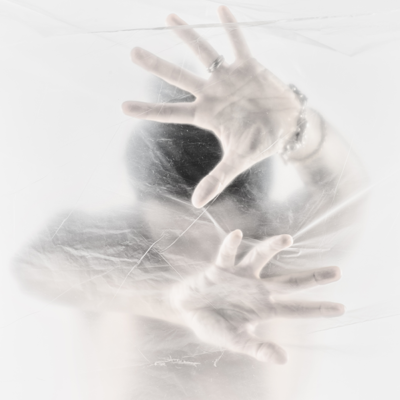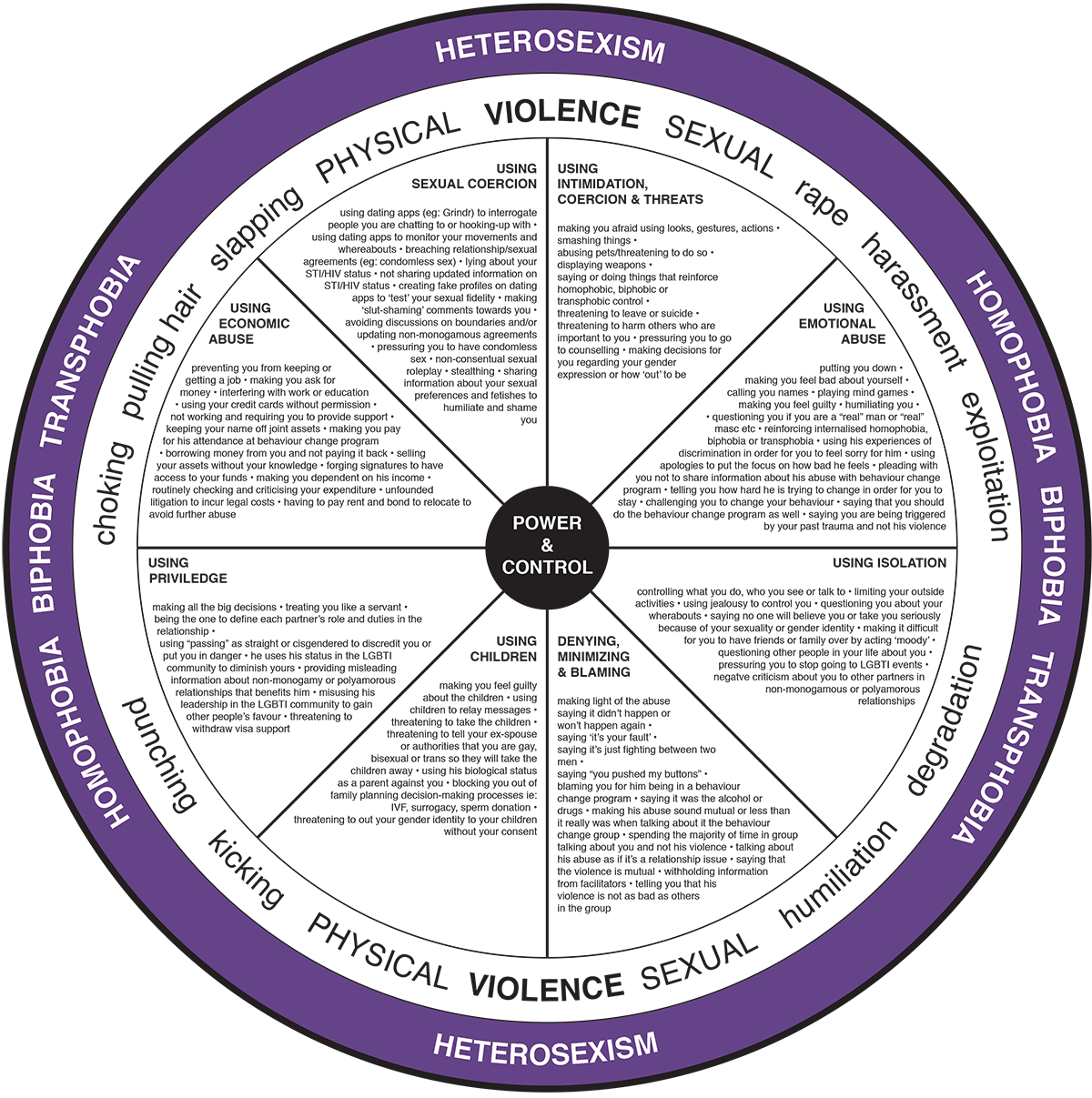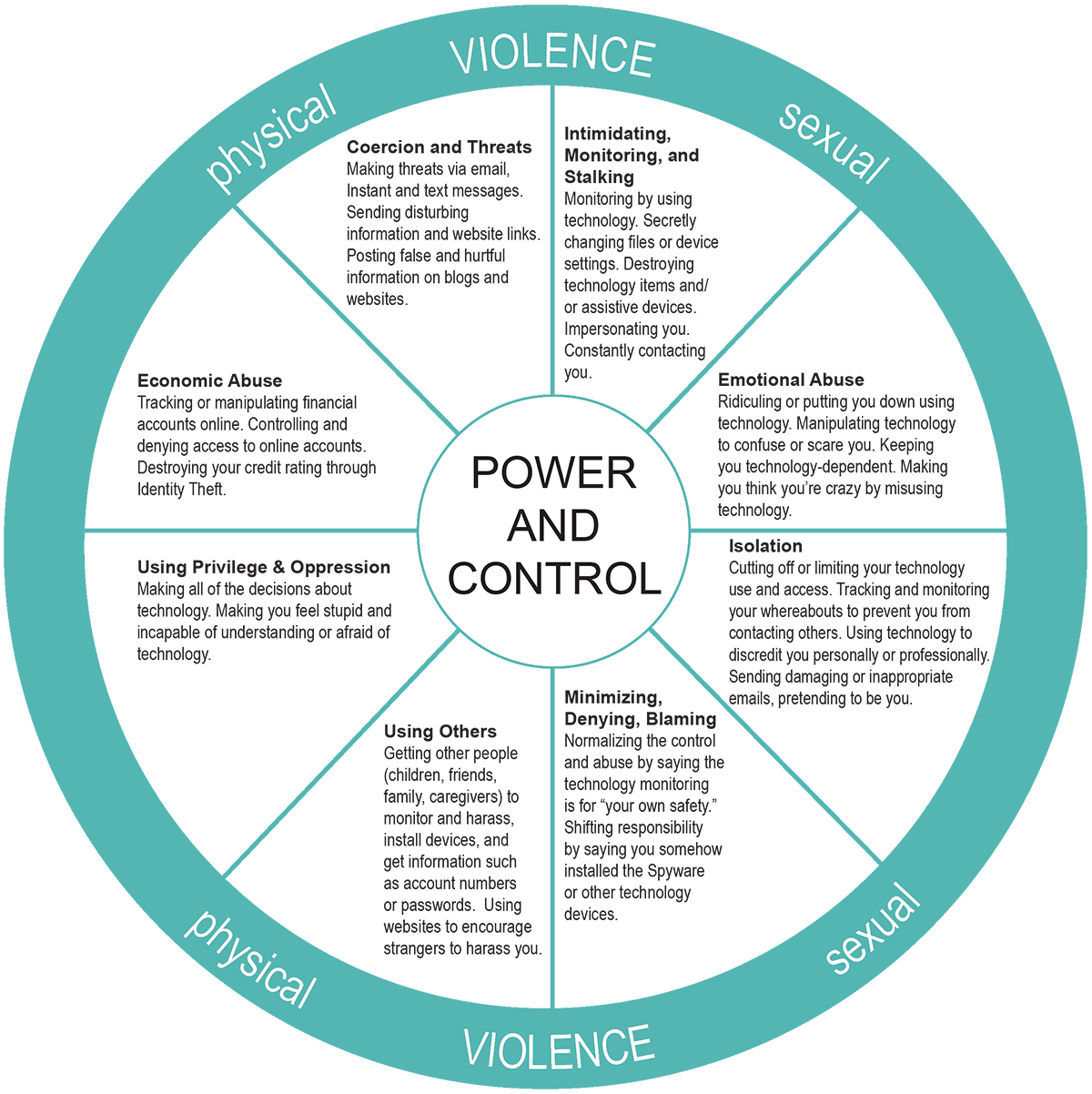Is This Abuse?
Domestic violence is a pattern of behaviors used to gain or maintain power and control. However, spotting the signs of an unhealthy relationship can sometimes be difficult to see. Stress and anxiety may be found in any relationship, but unhealthy and abusive relationships are an entirely different dynamic. 180 counselors can discuss your particular experience and help you determine if you are experiencing domestic violence. Counselors can support you, provide advice, give you access to services, and help you develop a Safety Plan.
Please review the following checklist from the National Coalition Against Domestic Violence.
As you review the questions, think about both how you are being treated by your partner and how you treat your partner. Remember, when one person scares, hurts, or continually puts down the other person, it’s abuse.
Answering “Yes” to any of these questions indicates that your relationship is unhealthy and perhaps even abusive.
If you are in immediate danger, contact 911.
Does your partner…
- Embarrass or make fun of you in front of your friends or family?
- Put down your accomplishments or goals?
- Make you feel like you are unable to make decisions?
- Use intimidation or threats to gain compliance?
- Tell you that you are nothing without them?
- Treat you roughly – grab, push, pinch, shove or hit you?
- Call you several times a night or show up to make sure you are where you said you would be?
- Use drugs or alcohol as an excuse for saying hurtful things or abusing you?
- Blame you for how they feel or act?
- Pressure you sexually for things you aren’t ready for?
- Make you feel like there “is no way out” of the relationship?
- Prevent you from doing things you want – like spending time with your friends or family?
- Try to keep you from leaving after a fight or leave you somewhere after a fight to “teach you a lesson”?
-
Call You Names?
-
Tell You What to Wear or How To Do Your Hair?
-
Get Extremely Jealous When You Talk To Others?
-
Check Up On You When You Go Out?
-
Threaten You When You Disagree With Him or Her?
-
Ask You Not To See Your Friends or Participate in Activities?
-
Put You Down or Embarrass You in Front of Others?
-
Destroy Things That You Care About?
-
Force You To Engage in Sexual Activities That Make You Feel Uncomfortable?
-
Ever Hold You Down, Push, Or Hit You?

Do you…
- Sometimes feel scared of how your partner will act?
- Constantly make excuses to other people for your partner’s behavior?
- Believe that you can help your partner change if only you changed something about yourself?
- Try not to do anything that would cause conflict or make your partner angry?
- Feel like no matter what you do, your partner is never happy with you?
- Always do what your partner wants you to do instead of what you want?
- Stay with your partner because you are afraid of what your partner would do if you broke up?
If any of these are happening in your relationship, talk to someone. Without some help, the abuse will continue.
If you are in an abusive relationship and fear for your safety, please call our Hotline at (888) 843-9262 so that we can help you develop a Safety Plan. Leaving an abusive relationship can be extremely risky and our Hotline Staff can provide you help and guidance.
What is Domestic and Sexual Violence / Signs of Domestic and Sexual Violence
Financial: Controlling all income and expenses, preventing a partner from working, or forcing clients to turn over their paychecks to the abuser, restricting access to financial accounts, limiting access to cash or credit cards, ruining a partners credit.
Physical: Hitting, slapping, pushing, biting, punching, kicking, restraining, choking, smothering, or strangulation. Strangulation is one of the most lethal forms of domestic violence: unconsciousness may occur within seconds and death within minutes.
Psychological: Intimidating a person with threatening looks and behavior, stalking, monitoring by using technology, using spyware and location tracking devices, monitoring technology, posting false information about you on social media, isolation from friends and family, or attacking self-esteem by blaming, manipulating, criticizing, and humiliating.
Sexual: Manipulating or forcing a person to do something sexual or any coerced, non-consensual, and unwanted sexual behavior.
Verbal: Cursing/swearing, yelling, name-calling, criticizing thoughts or feelings, and put-downs.
The Power & Control Wheel
Developed by the Domestic Abuse Intervention Project in Duluth, MN and referenced often at 180, The Power & Control Wheel is a diagram of tactics that an abusive partner might use to keep their victims in a relationship. The inside of the wheel is made up of subtle, continual behaviors over time, while the outer ring represents physical and sexual violence. Abusive actions like those depicted in the outer ring often reinforce the regular use of the more subtle methods found in the inner ring.
Power & Control Wheel: On Technology & Abuse
This diagram illustrates some ways that abusers can misuse technology within the context of sexual assault, domestic violence, and stalking. Technologies abusers misuse include, but are not limited to, cordless phones, radio scanners, and baby monitors; emails, text messaging, and instant messaging; computers and software applications; the Internet and websites; spyware or other computer monitoring tools; TTY (text telephones), relay services, and other assistive devices; GPS and other location tracking services; cell phones and other handheld computer phones; cameras and other recording equipment; fax machines; and a variety of other surveillance equipment.



